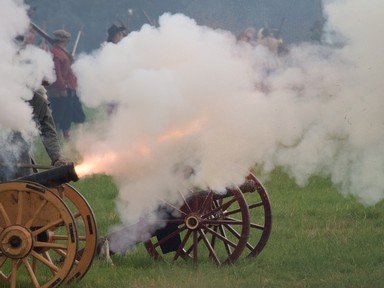Quiz Answer Key and Fun Facts
1. Who was the most prominent person to die at the Battle of Alnwick (13th November 1093)?
2. There were three battles of Dunbar. What were the results?
3. Macbeth was killed at the battle of Dunsinane in 1054.
4. Flodden is one of the two battles most people have heard of (along with Bannockburn). Where was it fought?
5. The Battle of Glen Shiel was small. What was significant about it?
6. Who fought at the battle of Nechtan's Mere (also known as Dunnichen)?
7. What was the result of the battle of Neville's cross on October 17th 1346?
8. Where was the Battle of Solway Moss fought?
9. The Scots provided the French with troops. Among the battles they fought was Verneuil. When did this army arrive in France?
10. Which civil war battle was fought on the anniversary of the battle of Dunbar - possibly because of superstition on the part of one of the commanders?
Source: Author
tnrees
This quiz was reviewed by FunTrivia editor
bloomsby before going online.
Any errors found in FunTrivia content are routinely corrected through our feedback system.

